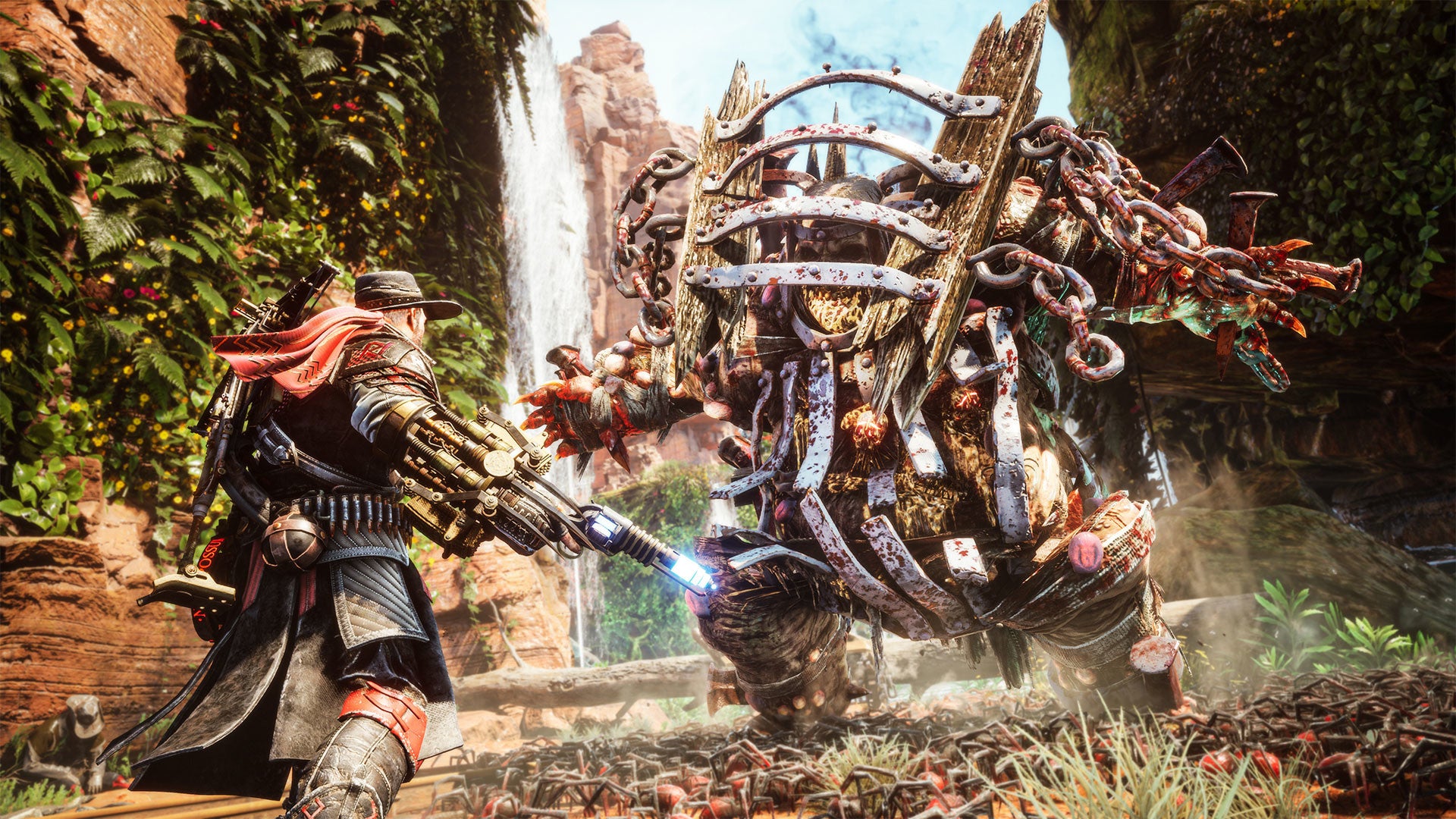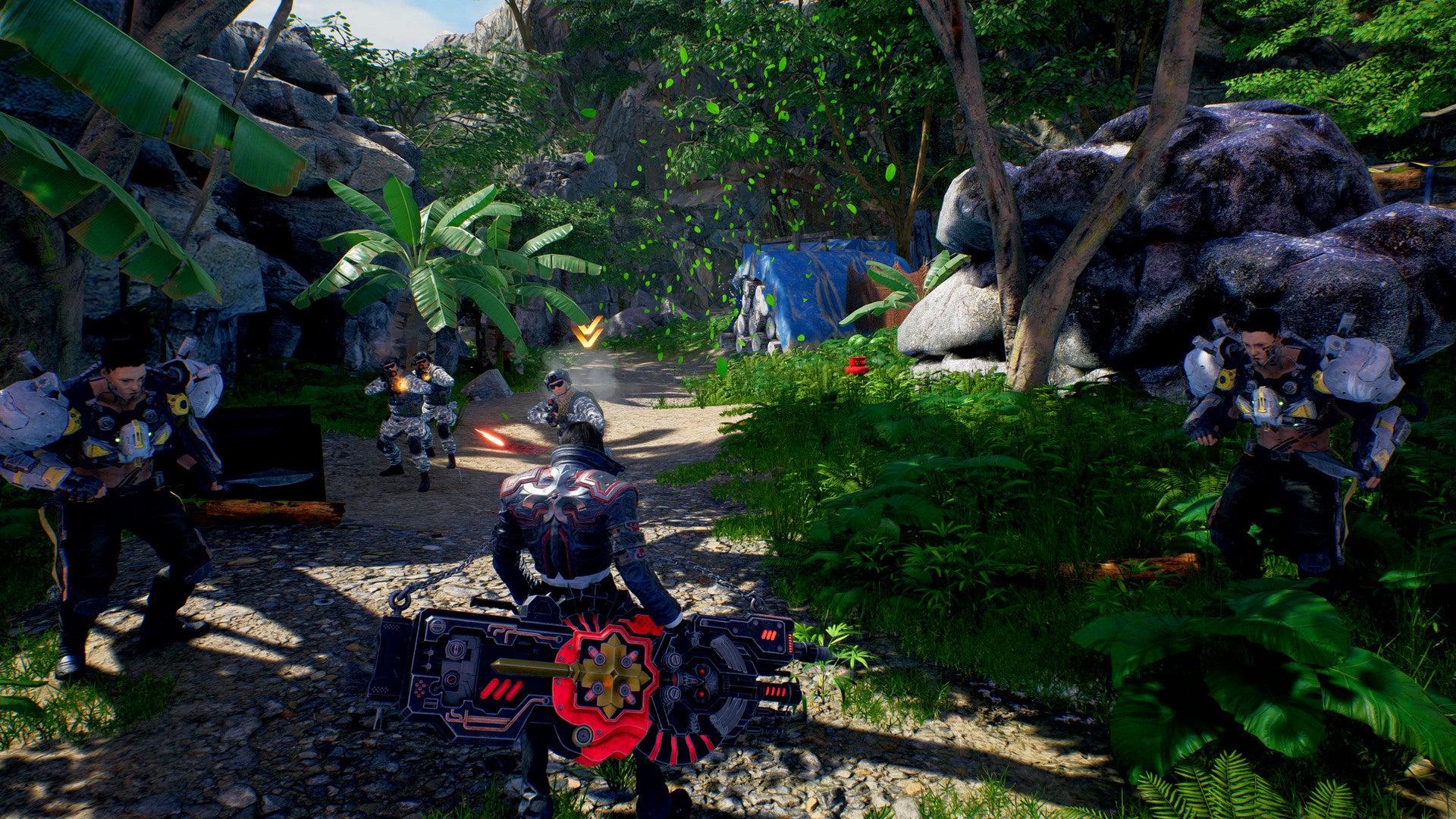The bigger the bet is, the more it has to work out. For this to happen, the game needs to appeal to as many people as possible to maximise its chances of recouping the investment. That’s the business, that’s the way things have to work.
Armies of talented developers all work to deliver something anyone can find interesting in one way or another. Maybe you don’t care about the franchise, or find its gameplay engaging, but doesn’t it make for a great showcase of your expensive new console and overpriced TV? The sort of thing you can show off to your friends, gesturing wildly at the crip 4K graphics and particle effects, saying ‘look! Look!’ over and over again.
Major publishers have been doubling down on this approach for over a decade now, and the result is amorphous, edge-free games that may as well be spheres – content soup that you can’t quite hate, but won’t find anyone enthusiastic about one way or another.
This is what I detest the most about our present reality in games, not server issues, or monetisation scandals (as terrible as those are). It’s the apathy. It’s the death by a thousand mehs.
It’s rare to see players complain about bad games these days, because they just aren’t that common anymore. Even the terrible Gotham Knights is perfectly playable. I put over 40 hours into it, rolled credits, and unlocked most of its achievements. But I didn’t enjoy it. I can’t believe anyone actually did.
I’m not here to argue about the game’s quality, just how uninteresting, disappointing, and bland it is.
The B-tier, double-A games we don’t see much of these days almost always have one thing in common that makes me want to play them more than any Assassin’s Creed or Far Cry: they fail in interesting ways.
I’ve been playing Evil West recently. I gave it a middling review because while I enjoyed my time with it, I could see all the ways it could’ve been better. I know the team at Flying Wild Hog has made better decisions in its other games, so I know a five-star version of Evil West can exist.
Despite my misgivings, I started a new save to try and play with mouse and keyboard – rather than controller. The game’s combat is engaging enough, and its tools diverse enough, that I want to experience it again – even knowing all the aggravating design elements that I’m going to run into.
Today also marks the release of a similar game: Gungrave G.O.R.E., one you also wouldn’t mistake for a triple-A product but will nonetheless be intrigued by. I know I am. Its janky animations, outdated visuals and (likely) poor localisation have all done the opposite of lowering my interest. They’ve piqued it.
And therein lies the crux of the argument. I know the Evil Wests and Gungrave G.O.R.E.s of the world will challenge me – mechanically, intellectually, spiritually, chemically… whatever.
The thought of, well, being motivated enough to have something to say about those games is part of why I play them. The drama – if you will – is infinitely more interesting to me than spending ten hours with the new Horizon and coming away with a shrug and a defeated “it’s alright, I guess.”
So join me, dear reader, in celebrating the mid-tier games of the world, and the publishers who continue to invest in them while warding off the temptations of forcing every studio they own to make The One Single Big Game (here’s looking at you, Call of Duty).
And let’s raise a glass to Game Pass, too, whilst we’re at it. Let’s make a point of celebrating a service full of those brilliant mid-tier games, a service that feels like it’s designed specifically for people like me: people who want to play them without having to wait for a price drop, or for a miraculous addition to Games With Gold or PS Plus.
Gungrave G.O.R.E., at least, is on Game Pass right now – and I am sure Evil West is not too far off. Until then, Game Pass has no shortage of those games to keep you busy.

